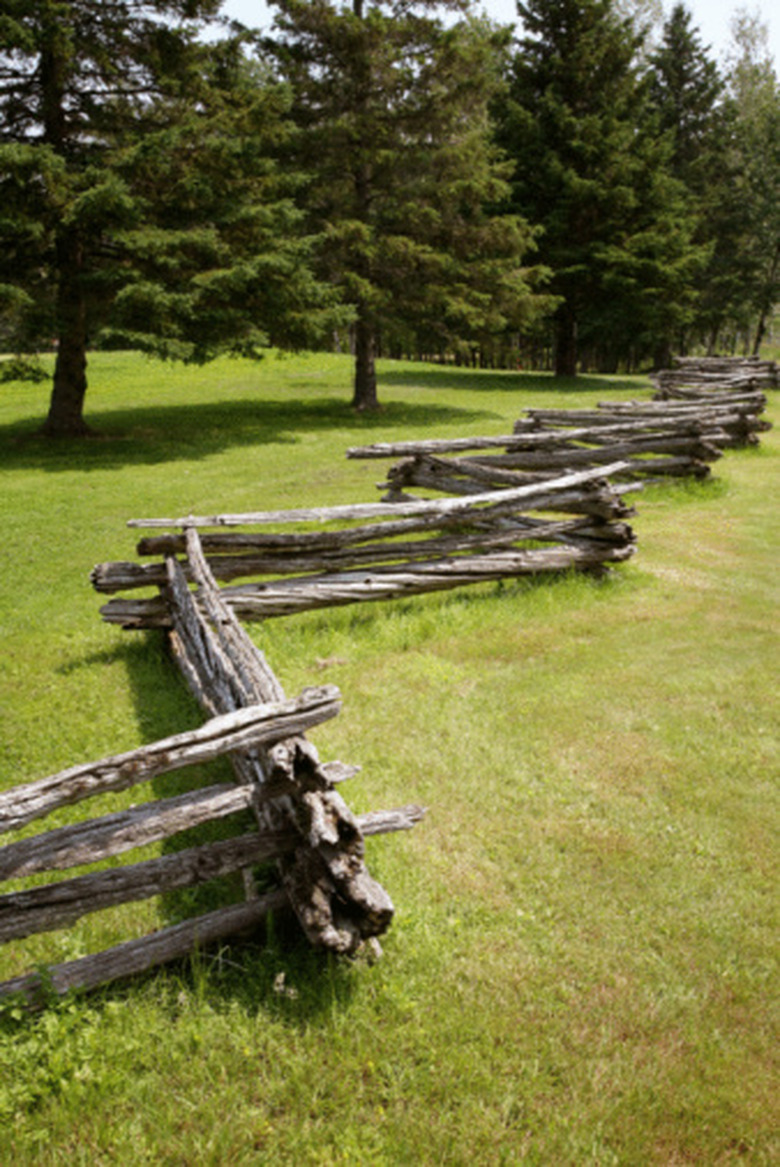Old Fashioned Fence Types
Fences keep animals and people in or outside of a property. Traditional fences were practical construction and built, sometimes, without a distinct purpose. Farmers removed rocks from plowed areas and stacked fences by the fields. Old-fashioned fences may be simply decorative. Modern fencing borrows old-fashioned styles to add elegance or flair to a property, in addition to the practical aspect of protecting the area from intruders.
Stone
Stone fences, popular in areas with a wealth of natural stone or stone quarries, use rocks or stones in a dry mortar stacking process. A cement-mix mortar may also hold the stones in place. Farmers historically stacked fences as fields were cleared of stones for plowing. Modern stone fences add visual appeal to traditional-style house architecture. Dry-stacked stone fence creations, according to the Dry Stone Conservancy in the Bluegrass region of Kentucky, are considered a lost art form in many communities.
Stick Style
Stick-style fences use natural wood cut into smaller sticks and nailed to sturdy fence posts. Popular traditional styles include baluster-style fences with square sticks attached horizontally and spaced from 1/2 to 2 inches apart. Other styles for sticks include ovals. The modern stick fence height uses 6-foot pieces, but shorter boards, in 4- or 5-foot lengths are also popular and match historic styles.
Ornamental Metal
Waist-high ornamental fences made from wrought and cast iron were popular eye candy for regal Victorian-style and turn of the 19th century homes. The Chicora Foundation Inc. notes that cemeteries also used the decorative metal fences. Designs incorporated metal picket, hairpin and scalloped styles. Combination designs paired bow and picket, bow and hairpin and hairpin and picket. End post styles featured single lines, panels, open with scroll details and a single scroll design. Ornamental fences are found in antique and architectural reclamation stores. These fences can be ordered from wrought-iron shops.
Picket
Picket fences have two horizontal-wood pieces and a series of shorter vertical wood pieces nailed approximately 1 or 2 inches apart. Pickets range from an inch to several inches wide and up to 4 feet in height. The pickets attach to a horizontal wooden strip for stability and the sections stand with the assistance of a sturdy post approximately every 5 feet. Fancy pickets display shapes at the top, including French Gothic styles, with a arrowhead-type point, or Gothic point, a simple rounded point. Pickets traditionally have white paint, stain or whitewash applied after the fence is in place. Modern pickets use concrete composites or polymers for construction.
Split Rail
Before sawmills came about, split-rail fences were common in rural areas and used in place of metal fences. Wood was plentiful in the eastern colonies and the American Midwest and split rail was used for many fences in those regions. Fence construction includes two or three vertical rails. Stacked split-rail fences connect rails in a zigzag pattern, where the rails stack together at the post section. This style is popular in rural areas where rails are taken from the forests or wooded areas, without milling work on the rails.
